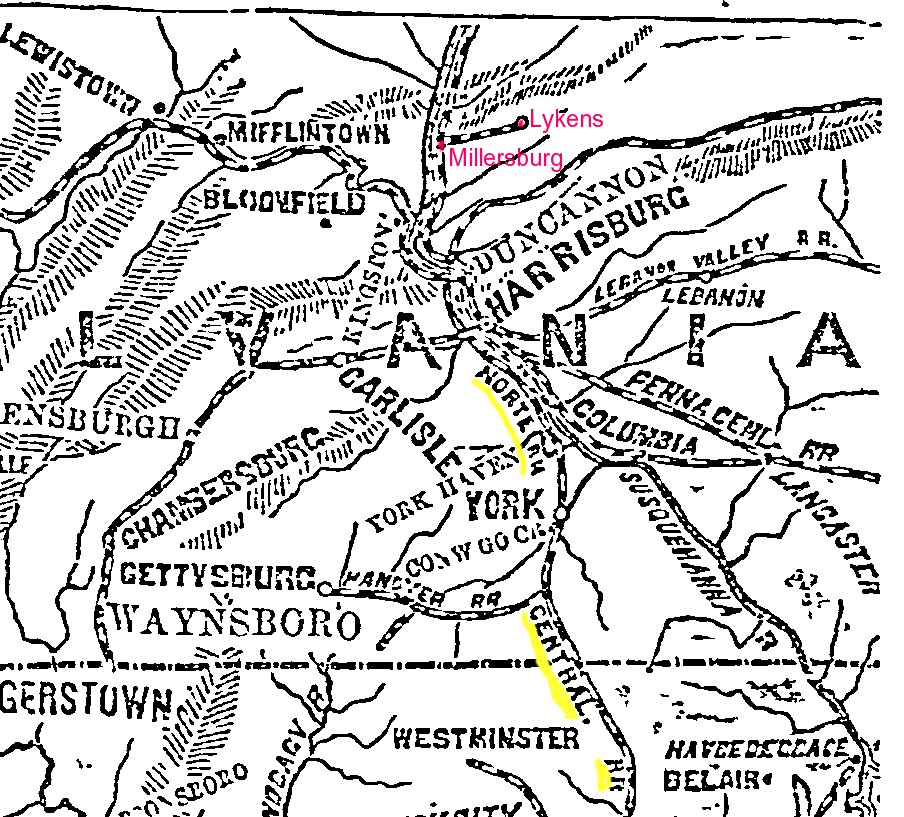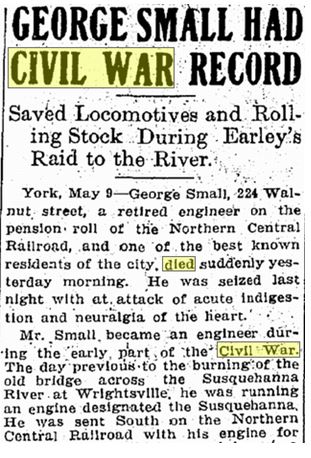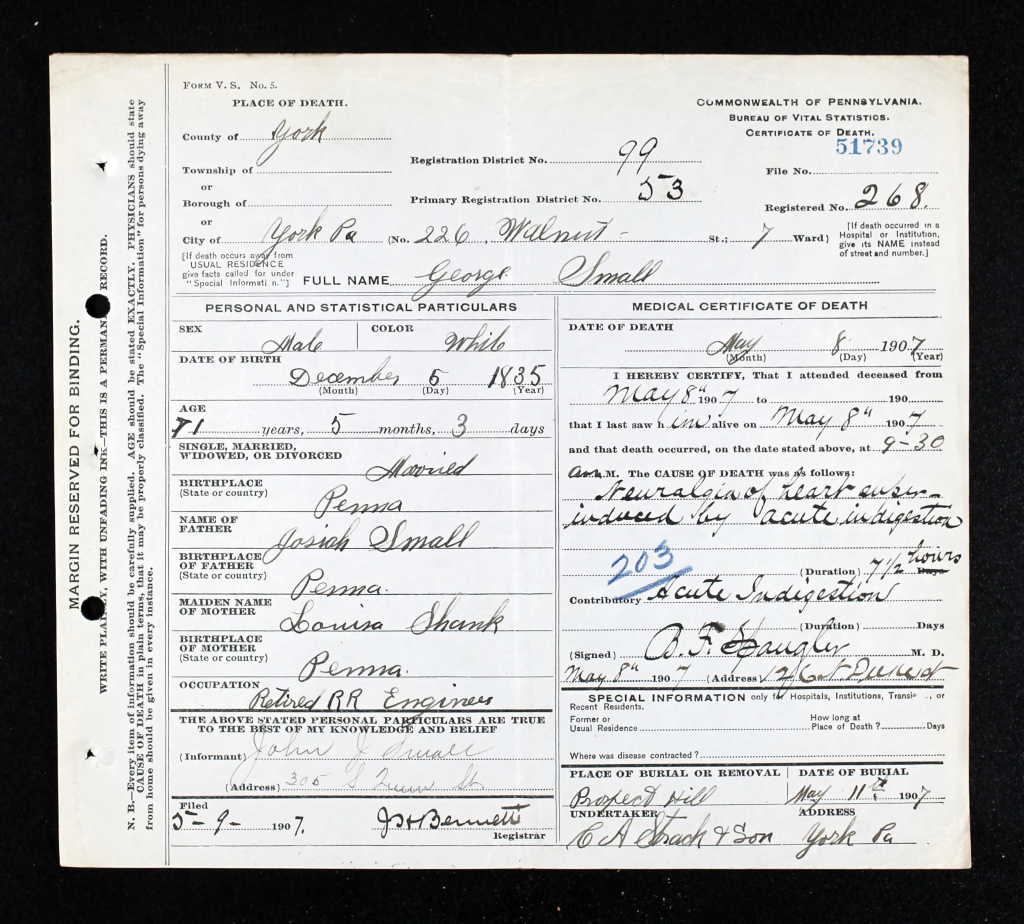George Small – Railroad Hero
Posted By Norman Gasbarro on March 30, 2015
GEORGE SMALL HAD CIVIL WAR RECORD
Saved Locomotives and Rolling Stock During Earley’s Raid to the River
York, Pennsylvania, 9 May 1907 — George Small, 224 Walnut Street, a retired engineer on the pension roll of the Northern Central Railroad, and one of the best known residents of the city, died suddenly yesterday morning. He was seized last night with an attack of acute indigestion and neuralgia of the heart.
Mr. Small became an engineer during the early part of the Civil War. The day previous to the burning of the old bridge across the Susquehanna River at Wrightsville, he was running an engine designated the Susquehanna. He was sent South on the Northern Central Railroad with his engine for some box cars which were lying on a siding near the Maryland State line. While on the way toward York with them, and when in the vicinity of Hanover Junction, he saw a troop of rebel cavalrymen galloping down the roadbed of the intersecting railway. The purpose of the rebels was to head off the engine and secure the cars. Mr. Small appreciated at a glance the situation and opened the throttle of the engine to the limit. He called to his fireman to follow and left the unprotected cab for the sheltering of the tender. The rebels fired several volleys at the fleeing train but not a bullet struck engine or tender and he and his fireman escaped to the safety of this city. The news of the Confederate invasion into York County had spread like wildfire and by the time Mr. Small reached York orders had been issued by the railway officials to remove all rolling stock across the Susquehanna River. The morning after his encounter with the rebels at Hanover Junction Mr. Small pulled out of York for Wrightsville with a company of Union soldiers. The bridge across the river was an overhead affair and until his arrival no engine had ever passed over it; the cars being transported across to Columbia by mule teams. This was necessary because of the size and shape of the smokestacks with which the locomotives of those days were equipped. They were funnel shaped, most of which measured at least five feet in diameter and six to eight feet above the boiler proper.
Upon Mr. Small’s arrival at Wrightsville many cars had been transferred to Columbia but several locomotives were standing on a siding as though waiting for the rebels to come and destroy them. Mr. Small, however, to prevent if possible what would have been a great loss to the railroad company. He and his fireman set to work and removed the nuts and bolts by which the stacks were attached to their engine, and in a short time the big iron funnel was loaded on a gondola car. Under the ten mule power, the Susquehanna made her trip across the river. In making the curve onto the bridge the front wheels left the rails. Once again the York engineer’s ingenuity was called into play and with the aid of jacks and tackle he replaced the engine and the trip to Columbia was made without further mishap.
Mr. Small also assisted the other engineers to take the stacks off their engines and once on the Columbia side of the river the dismounted locomotives were coupled to trains and taken to Philadelphia. The transportation was effected none too soon for Mr. Small had hardly reached Coatesville before the flames from the burning bridge lit up the darkening skies.
The above article appeared in the Harrisburg Patriot on 10 May 1907.

A map showing the area of concern was previously presented on this blog and is shown above for easy reference.
The George Small who was the railroad engineer from York County had no known Civil War military record. In a very usual type error, a Pennsylvania Veterans’ Burial Card confuses him with a man who served in the 165th Pennsylvania Infantry. But the man who served in that regiment was from Adams County, was only 16 years old when he joined that regiment, and had parents named Joseph Small and Lydia Small – clearly a different person.
George Small, railroad engineer, was born on 5 December 1835 to parents Josiah Small and Louisa [Shank] Small. He was married twice, first to Mary Tomes, who died in 1874 and second to Frances “Fannie” Seitz who survived him. George Small died on 8 May 1907, as stated in his obituary.
A family picture including George Small and his second wife Fannie is available on Ancestry.com from which the above portrait of George was cropped.
The death certificate of George Small (above) was obtained through Ancestry.com.

George Small is buried at Prospect Hill Cemetery, York, York County, with both of his wives. Further information about him can be found at his Findagrave Memorial.
For a story about the Columbia-Wrightsville Bridge, see Flames on the Susquehanna. For a story about how Confederate General John B. Gordon saved the town of Wrightsville from burning, see Naked Man Visits Rebs on Rapidan.
—————————–
News clippings are from the on-line resources of the Free Library of Philadelphia.
 ;
;





Comments